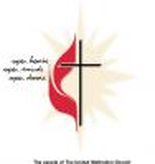Our United Methodist Structure

I. General Church
The governing body of the denomination is the General Conference, which meets every four years. The next meeting is in 2012 in Tampa, Florida.
a. Each annual conference elects an equal number of lay and clergy representative delegates to the General Conference. The number of delegates annual conferences elect varies according to their overall membership. We will have 14 delegates at the 2012 assembly: seven clergy and seven lay delegates. Clergy delegates are elected by clergy, and lay delegates are elected by lay members to the annual conference.
b. The Book of Discipline
c. The Book of Resolutions
II. Jurisdictions
Bishops are elected and appointed by elected delegates at the Jurisdictional Conferences. There are five jurisdictions in this country.
a. Southeastern
b. North Dakota
c. North Central
d. Western
e. Northeastern.
III. Annual Conference
a. The Baltimore Washington Conference (BWC) includes all of central and western Maryland (west of the Bay Bridge), Washington D.C. and the Panhandle corner of West Virginia. We have approximately 680 churches consisting of about 200,000 members, and 750-800 elders in our conference. Bishop John R. Schol is our episcopal leader.
b. The Conference Cabinet comprises eight District Superintendents, plus (as extended cabinet) the staff heads of Finance, Communications, and Connectional Ministries.
c. The BWC of The UMC is divided into eight districts, which are further organized into four regions. There are the Annapolis District, the Baltimore Metropolitan District, the Baltimore Suburban District, the Cumberland-Hagerstown District, the Frederick District, the Greater Washington District, the Washington East District and the Central Maryland District.
d. Randall Memorial is in the Greater Washington District and our district superintendent is the Rev. A. David Argo.
e. There are five required committees in all of our churches: 1. Board of Trustees; 2. Committee on Nominations and Leadership Development; 3. Finance Committee; 4. Pastor-Parish Relations Committee; and 5. Administrative Council.
The governing body of the denomination is the General Conference, which meets every four years. The next meeting is in 2012 in Tampa, Florida.
a. Each annual conference elects an equal number of lay and clergy representative delegates to the General Conference. The number of delegates annual conferences elect varies according to their overall membership. We will have 14 delegates at the 2012 assembly: seven clergy and seven lay delegates. Clergy delegates are elected by clergy, and lay delegates are elected by lay members to the annual conference.
b. The Book of Discipline
c. The Book of Resolutions
II. Jurisdictions
Bishops are elected and appointed by elected delegates at the Jurisdictional Conferences. There are five jurisdictions in this country.
a. Southeastern
b. North Dakota
c. North Central
d. Western
e. Northeastern.
III. Annual Conference
a. The Baltimore Washington Conference (BWC) includes all of central and western Maryland (west of the Bay Bridge), Washington D.C. and the Panhandle corner of West Virginia. We have approximately 680 churches consisting of about 200,000 members, and 750-800 elders in our conference. Bishop John R. Schol is our episcopal leader.
b. The Conference Cabinet comprises eight District Superintendents, plus (as extended cabinet) the staff heads of Finance, Communications, and Connectional Ministries.
c. The BWC of The UMC is divided into eight districts, which are further organized into four regions. There are the Annapolis District, the Baltimore Metropolitan District, the Baltimore Suburban District, the Cumberland-Hagerstown District, the Frederick District, the Greater Washington District, the Washington East District and the Central Maryland District.
d. Randall Memorial is in the Greater Washington District and our district superintendent is the Rev. A. David Argo.
e. There are five required committees in all of our churches: 1. Board of Trustees; 2. Committee on Nominations and Leadership Development; 3. Finance Committee; 4. Pastor-Parish Relations Committee; and 5. Administrative Council.
